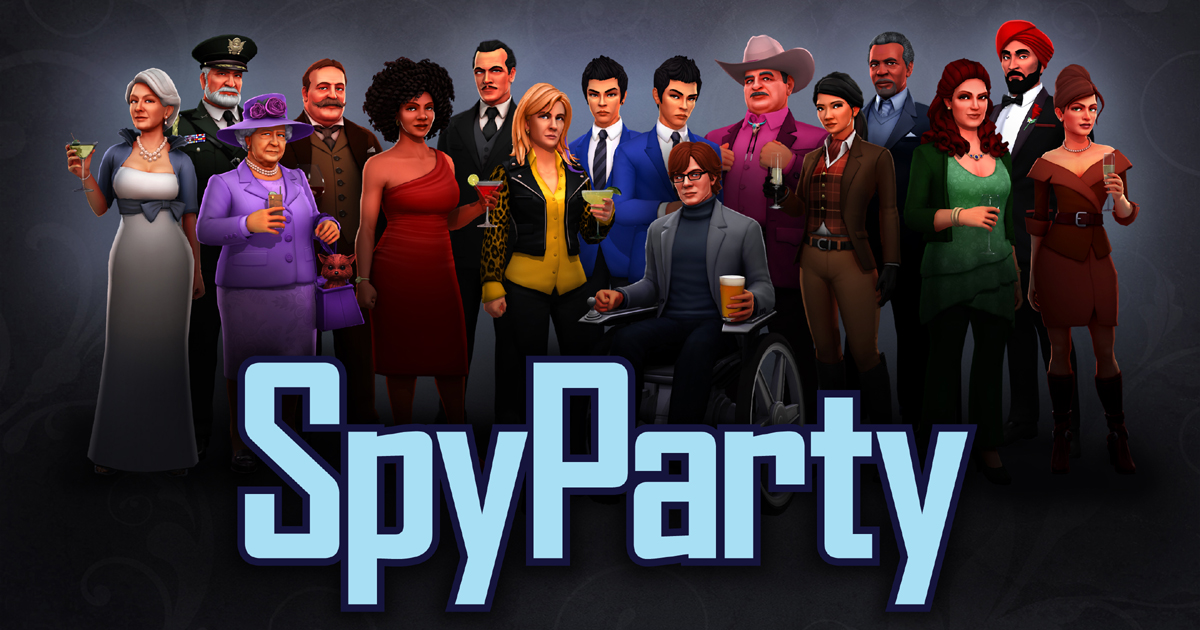

Suppose, late in a game, that you have successfully green swapped a statue, but are being followed closely by the sniper, who is obviously suspicious of you. As a spy, you can burn the sniper for this dubious assumption by going up to the ambassador at statues, picking up an adjacent statue, then immediately putting it down and bugging when you see the sniper look away.Īlso, consider the fact that even if you yourself are high on the list of suspects and have the sniper staring at you, you can make a play happen by using this very fact against the sniper. The sniper may very well watch the ambassador closely, but if the partygoer goes to pick up the statue, the sniper will probably consider the situation to now be relatively safe and move on. A partygoer walks up to an adjacent statue. Another illustration: the ambassador is at a statue. For example, the sniper often assumes that someone who picks up a statue is not going to be doing anything else for a few seconds. Other misdirections are based upon playing to the sniper's expectations and letting them fool themselves. If you put the book back and then immediately take another one, it will be unmarked, and the sniper probably won't notice because they'll think you've just been innocently reading at that same bookcase the whole time, and that they've already dealt with you only dedicated attention from the sniper will reveal what you've done. Unfortunate, but think about it from the sniper's perspective - he thinks that he has now checked off "mark this person's book" on his to-do list, and will now go manage other business. You go to the bookcase, pick up a book, and then the sniper wheels by and apparently marks your book. Example- Suppose you are trying to transfer microfilm by a direct book transfer. However, the principle of misdirection is still very important.) You can mislead the sniper by lying to him with your own actions. (Note: The example given in this paragraph is outdated, as marking books is no longer a feature in the game. In this case, you again have a window where the sniper is going to have a loosened hold on their normal areas of vigilance. If you have successfully purloined, for instance, and are keeping a careful watch on the sniper, you might notice him suddenly becoming aware that you've purloined and rushing about trying to make determinations about who could be guilty. Sometimes you can set a time bomb by green testing a mission and then take advantage of the aftermath when it goes off. The seconds immediately following a banana bread are often an ideal time to get away with hard tells, especially fast ones like bugging the ambassador, or purloining the guest list, though that takes a little planning in that you have to call Toby over and banana bread when he's en route/offering the drink. When a banana bread goes off, the sniper often attempts to lowlight and/or highlight various people in the party, and will momentarily stop following whatever their normal pattern is. One of the easiest to grasp and use effectively is covering other actions with the banana bread. Though it may sound difficult, there are countless ways to do this. The magician stands in plain sight, known to the whole audience as the one creating the deception, but the spy's challenge is to create distractions for the sniper while concealing his identity as the one responsible for the misdirection. Unlike a magician, however, the spy cannot identify himself as such. Misleading the sniper has much in common with magic, the performance art. Done successfully, it allows the spy to get away with murder in plain sight by making the sniper look somewhere else. This is not the only way misdirection is used though, and as we experiment and toy with the game these will only become more well-known and documented.īeing able to control the sniper's attention is powerful. The core idea of this play is that most snipers will then lowlight all AIs out of conversation circles, while ignoring the hard tells they were guarding. The most common example of misdirection players will see is a hard tell in combination with contacting the double agent. Because of the limited interaction between the spy and sniper (save for a single bullet), currently this strategy is possible but can be quite hard to pull off. Misdirection is a common spy tactic many players use in an attempt to guide what the sniper is doing.

While the sniper is busy lowlighting, the AI swaps the statue and isn't noticed until it's too late. The spy then contacts the double agent to distract the sniper. The spy green tests on a statue swap, summoning an AI to swap it for them.


 0 kommentar(er)
0 kommentar(er)
